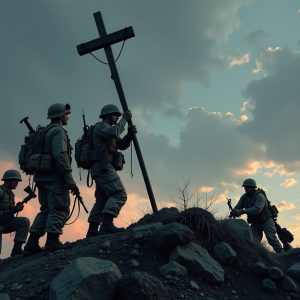
Battle Of Iwo Jima
The Battle of Iwo Jima, fought from
The Battle of Iwo Jima, fought from February 19 to March 26, 1945, was a pivotal conflict during World War II between the United States and the Empire of Japan. Situated in the Pacific Theater, the small volcanic island of Iwo Jima was strategically important due to its location, approximately halfway between Japan and the U.S. airbases in the Mariana Islands. The U.S. aimed to capture the island to use its airfields for emergency landings and as a base for launching bombing raids on Japan. The Japanese defenders, numbering about 21,000, had spent months fortifying the island with a complex network of tunnels, bunkers, and artillery positions. When the battle began, the Americans faced fierce resistance despite overwhelming air and naval bombardment.
The fighting on Iwo Jima was among the bloodiest of the war, characterized by brutal close-quarters combat and heavy casualties on both sides. U.S. Marines endured treacherous terrain, well-concealed enemy positions, and relentless counterattacks. After 36 days of intense combat, American forces succeeded in securing the island, though at a steep cost: nearly 7,000 Americans were killed, and over 19,000 were wounded. The Japanese garrison was nearly annihilated, with only a few hundred taken prisoner. The iconic image of Marines raising the U.S. flag on Mount Suribachi symbolized the struggle and sacrifice of the battle, which ultimately contributed to the broader Allied strategy of pressuring Japan and hastening the end of the war.